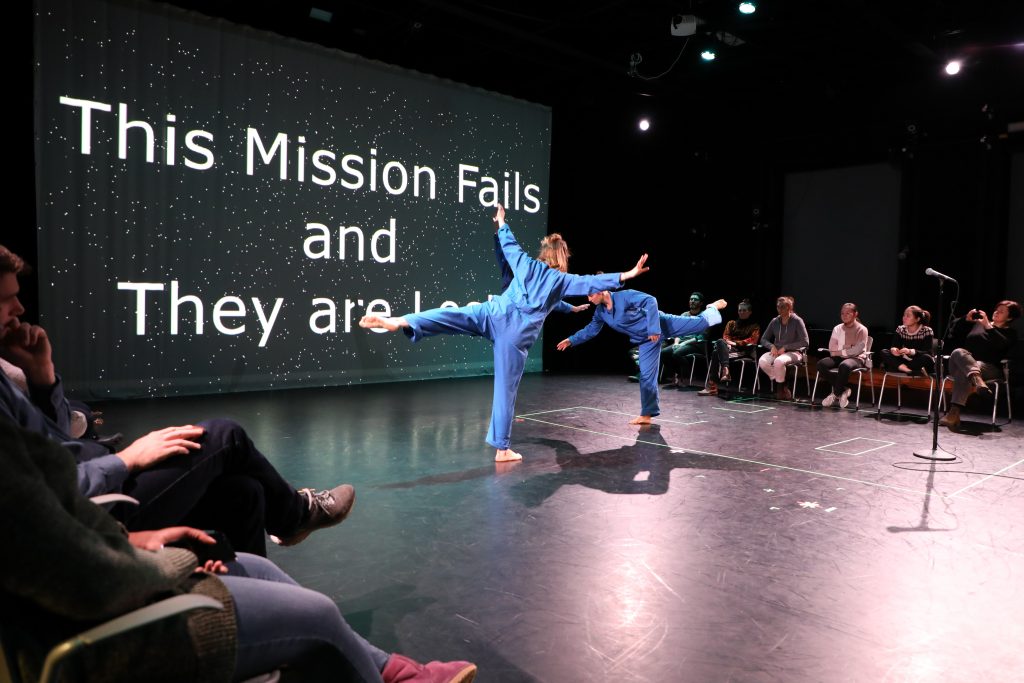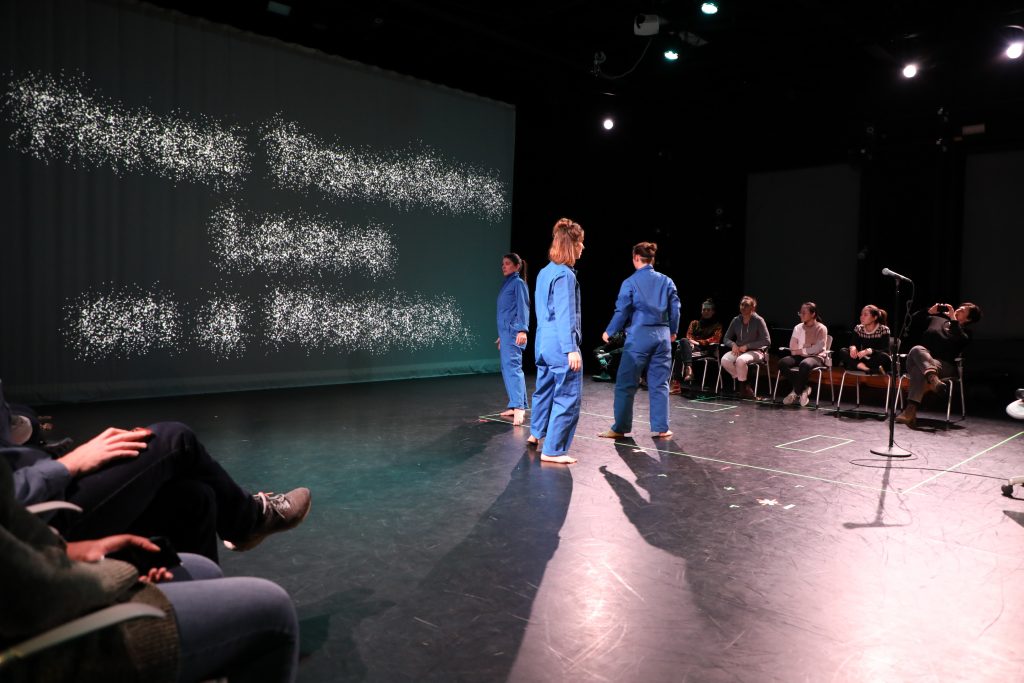Mollie Wolf Cycle 2: The WILDS – Dancing w/ Cody
Posted: November 27, 2022 Filed under: Uncategorized | Tags: depth camera, Interactive Media, Isadora, kinect, mollie wolf Leave a comment »For Cycle 2, I began experimenting with another digital ecosystem for my thesis installation project. I began with a shot I have of one of my collaborators, Cody Brunelle-Potter dancing, gesturing, casting spells on the edge of a log over looking a mountain side. As they do so, I (holding the camera) am slowing walking toward them along the log. I was rewatching this footage recently with the idea of using a depth camera to play the footage forward or backward as you walk – allowing your body to mimic the perspective of the camera – moving toward Cody or away from them.
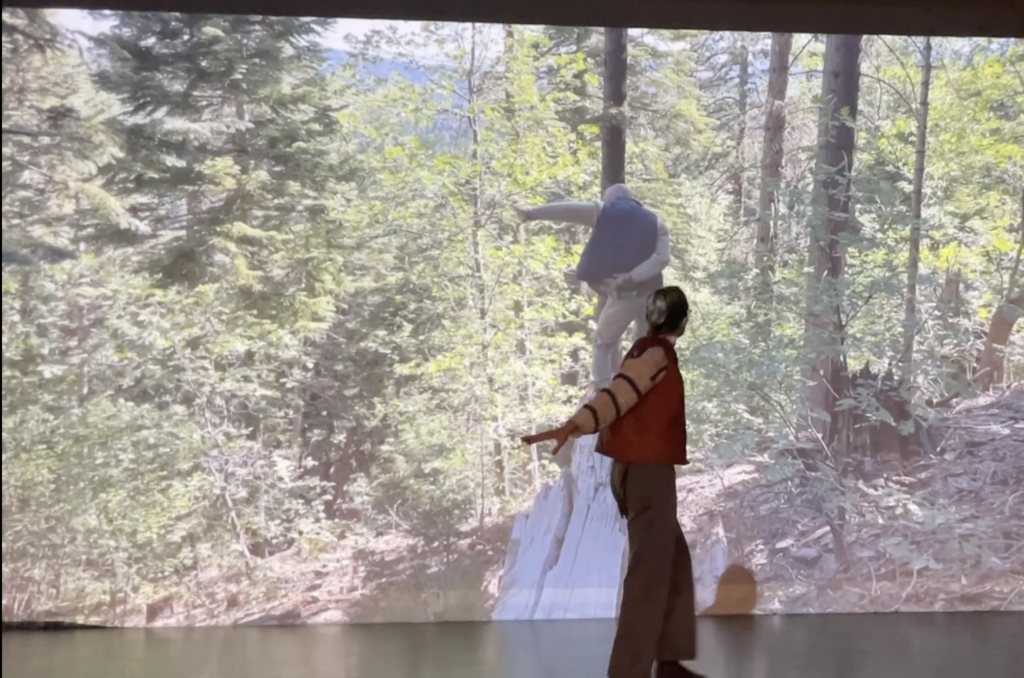
I wasn’t exactly sure how to make this happen, but the first idea I came up with was to make an Isadora patch that recorded how far someone was from an Xbox Kinect at moments in time regularly, and was always comparing the their current location to where they were a moment ago. Then, whether the difference between those two numbers was positive or negative would tell the video whether to play forward or backward.
I explained this idea to Alex; he agreed it was a decent one and helped me figure out which actors to use to do such a thing. We began with the OpenNI Tracker, which has many potential ways to track data using the Kinect. We turned many of the trackers off, because I wasn’t interested in creating any rules in regards to what the people were doing, just where they were in space. The Kinect sends data by bouncing a laser of objects, depending on how bright the is when it bounces back tells the camera whether the object is close (bright), or far (dim). So the video data that comes from the Kinect is grey scale, based on this brightness (closer is to white, as far is to black). To get a number from this data, we used a Calc Brightness actor, which tracks a steadily changing value corresponding to the brightness of the video. Then we used Pulse Generator and Trigger Value actors to frequently record this number. Finally, we used two Comparator actors: one that checked if the number from the Pulse Generator was less than the current brightness from the Calc Brightness actor, and one that did the opposite, if it was greater than. These Comparators each triggered Tigger Value actors that would trigger the speed of the Movie Player playing the footage of Cody to be -1 or 1 (meaning that it would play forward at normal speed or backwards at normal speed).
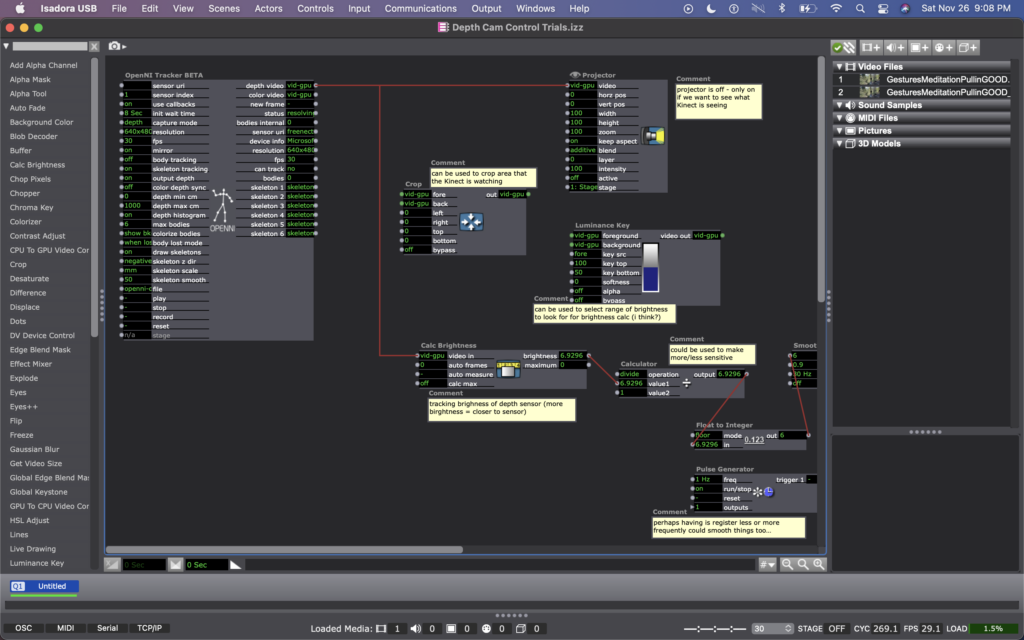
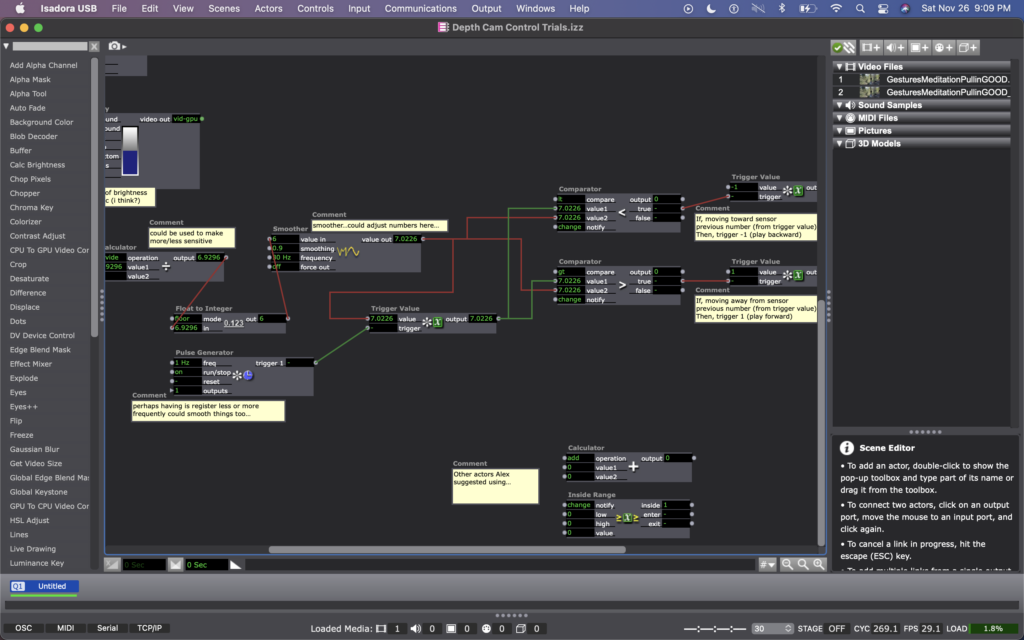
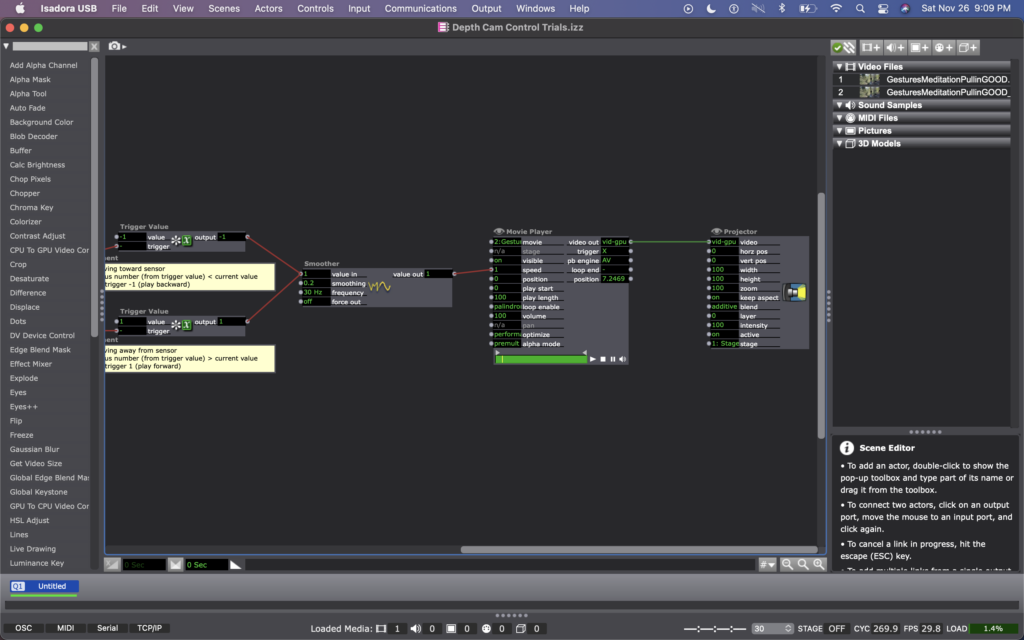
Once this basic structure was set up, quite a bit of fine tuning was needed. Many of the other actors you see in these photos were used to experiment with fine tuning. Some of them are connect and some of them are not. Some of them are even connected but not currently doing anything to manipulate the data (the Calculator, for example). At the moment, I cam using the Float to Integer actor to make whole numbers out of the brightness number (as opposed to one with 4 decimal points). This makes the system less sensitive (which was a goal because initially the video would jump between forward and backward when a person what just standing still, breathing). Additionally I am using a Smoother in two locations, one before the data reaches the Trigger Value and Comparator actors, and one before the data reaches the Movie Player. In both cases, the Smoother creates a gradual increase or decrease of value between numbers rather than jumping between them. The first helps the sensed brightness data change steadily (or smoothly, if you will); and the second helps the video slow to a stop and then speed up to a reverse, rather than jumping to reverse, which felt glitchy originally. As I move this into Urban Arts Space, where I will ultimately be presenting this installation, I will need to fine tune quite a bit more, hence why I have left the other actors around as additional things to try.
Once things were fine tuned and functioning relatively well, I had some play time with it. I noticed that I almost instantly had the impulse to dance with Cody, mimicking their movements. I also knew that depth was what the camera was registering, so I played a lot with moving forward and backward at varying times and speeds. After reflecting over my physical experimentation, I realized I was learning how to interact with the system. I noticed that I intuitively changed my speed and length of step to be one that the system more readily registered, so that I could more fluidly feel a responsiveness between myself and the footage. I wondered whether my experience would be common, or if I as a dancer have particular practice noticing how other bodies are responding to my movement and subtly adapting what I’m doing in response to them…
When I shared the system with my classmates, I rolled out a rectangular piece of astro turf in the center of the Kinect’s focus (and almost like a carpet runway pointing toward the projected footage of Cody). I asked them to remove their shoes and to take turns, one at a time. I noticed that collectively over time they also began to learn/adapt to the system. For them, it wasn’t just their individual learning, but their collective learning because they were watching each other. Some of them tried to game-ify it, almost as thought it was a puzzle with an objective (often thinking it was more complicated than it was). Others (mostly the dancers) had the inclination to dance with Cody, as I had. Even though I watched their bodies learned the system, none of them ever quite felt like they ‘figured it out.’ Some seemed unsettled by this and others not so much. My goal is for people to experience a sense of play and responsiveness between them and their surroundings, less that it’s a game with rules to figure out.
Almost everyone said that they enjoyed standing on the astro turf—that the sensation brought them into their bodies, and that there was some pleasure in the feeling of stepping/walking on the surface. Along these lines, Katie suggested a diffuser with pine oil to further extend the embodied experience (something I am planning to do in multiple of the digital ecosystems through out the installation). I’m hoping that prompting people into their sensorial experience will help them enter the space with a sense of play, rather than needing to ‘figure it out.’
I am picturing this specific digital ecosystem happening in a small hallway or corner in Urban Arts Space, because I would rather this feel like an intimate experience with the digital ecosystem as opposed to a public performance with others watching. As an experiment with this hallway idea, I experimented with the zoom of the projector, making the image smaller or larger as my classmates played with the system. Right away, my classmates and I noticed that we much preferred the full, size of the projector (which is MUCH wider than a hallway). So now I have my next predicament – how to have the image large enough to feel immersive in a narrow hallway (meaning it will need to wrap on multiple walls).
Cycle 3–Allison Smith
Posted: April 28, 2022 Filed under: Uncategorized | Tags: dance, Interactive Media, Isadora 1 Comment »I had trouble determining what I wanted to do for my Cycle 3 project, as I was overwhelmed with the possibilities. Alex was helpful in guiding me to focus on one of my previous cycles and leaning into one of those elements. I chose to follow up with my Cycle 1 project that had live drawing involved through motion capture of the participant. This was a very glitchy system, though, so I decided to take a new approach.
In my previous approach of this, I utilized the skeleton decoder to track the numbers of the participants’ hands. These numbers were then fed into the live drawing actor. The biggest problem with that, though, is that the skeleton would not track well and the lines didn’t correspond to the person’s movement. In this new iteration, I chose to use a camera, eyes ++ and the blob decoder to track a light that the participant would be holding. I found this to be a much more robust approach, and while it wasn’t what I had originally envisioned in Cycle 1, I am very happy with the results.
I had some extra time and spontaneously decided to add another layer to this cycle, where the participant’s full body would be tracked with a colorful motion blur. With this, they would be drawing but we would also see the movement the body was creating. I felt like this addition leaned into my research in this class of how focusing on one type of interactive system can encourage people to move and dance. With the outline of the body, we were able to then see the movement and dancing that the participant’s probably weren’t aware they were doing. I then wanted to put the drawing on a see-through scrim so that the participant would be able to see both visuals being displayed.
A few surprises came when demonstrating this cycle with people. I instructed that viewers could walk through the space and observe however they wanted, however I didn’t consider how their bodies would also be tracked. This brought out an element of play from the “viewers” (aka the people not drawing with the light) that I found most exciting about this project. They would play with different ways their body was tracked and would get closer and farther from the tracker to play with depth. They also played with shadows when they were on the other side of the scrim. My original intention with setting the projections up the way that they were–on the floor in the middle of the room–was so that the projections wouldn’t mix onto the other scrims. I never considered how this would allow space for shadows to join in the play both in the drawing and in the bodily outlines. I’ve attached a video that illustrates all of the play that happened during the experience:
Something that I found interesting after watching the video was that people were hesitant to join in at first. They would walk around a bit, and they eventually saw their outlines in the screen. It took a few minutes, though, for people to want to draw and for people to start playing. After that shift happened, there is such a beautiful display of curiosity, innocence, discovery, and joy. Even I found myself discovering much more than I thought I could, and I’m the one who created this experience.
The coding behind this experience is fairly simple, but it took a long time for me to get here. I had one stage for the drawing and one stage for the body outlines. For the drawing, like I mentioned above, I used a video in watcher to feed into eyes ++ and the blob decoder. The camera I used was one of Alex’s camera as it had a manual exposer to it, which we found out was necessary to keep the “blob” from changing sizes when the light moved. The blob decoder finds bright points in the video, and depending on the settings of the decoder, it will only track one bright light. This then fed into a live drawing actor in its position and size, with a constant change in the colors.
For the body outline, I used an astra orbec tracker feeding into a luminance key and an alpha mask. The foreground and mask came from the body with no color, and the background was a colorful version of the body with a motion tracker. This created the effect of having a white colored silhouette with a colorful blur. I used the same technique for color in the motion blur as I did with the live drawing.
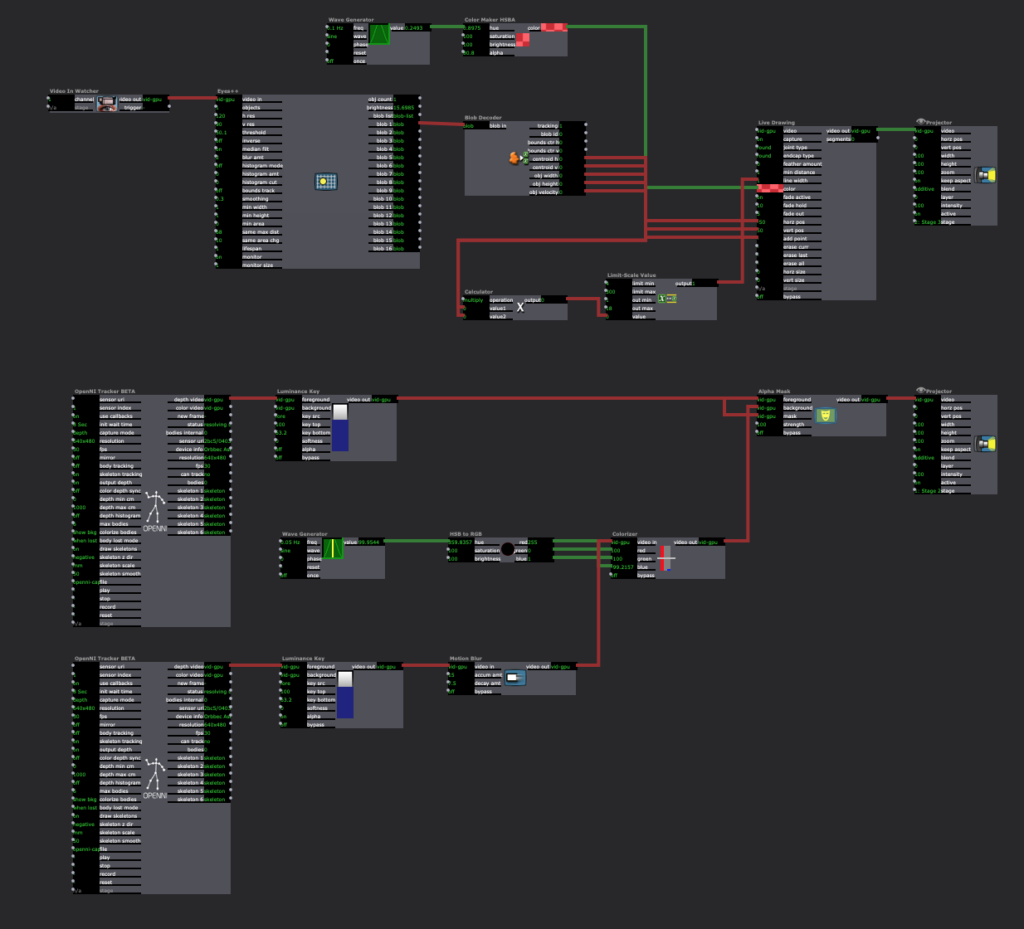

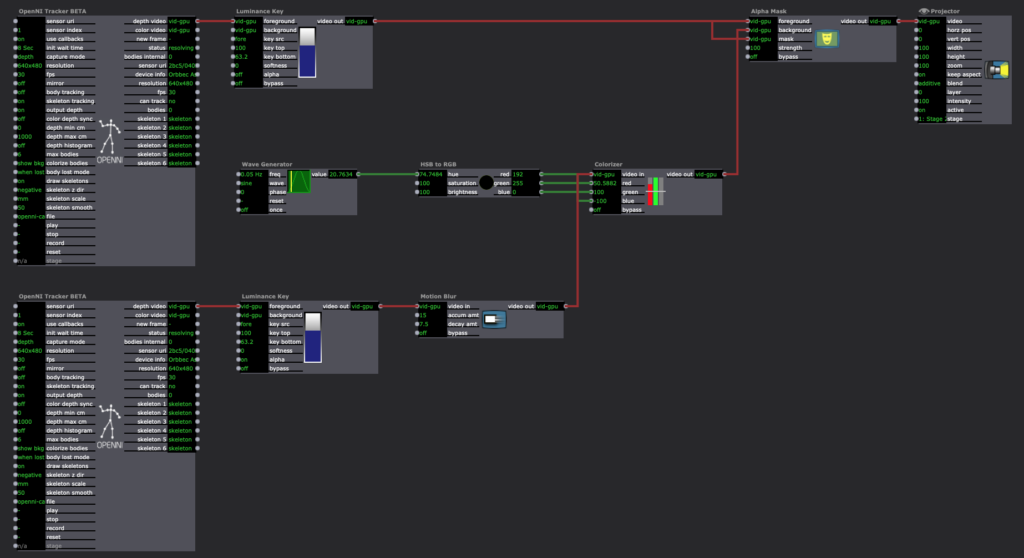
I’m really thankful for how this cycle turned out. I was able to find some answers to my research questions without intentionally thinking about that, and I was also able to discover a lot of new things within the experience and reflecting upon it. The biggest takeaway I have is that if I want to encourage people to move, it is beneficial to give everyone an active roll in exploration rather than having just one person by themselves. I was focused too much on the tool in my previous cycles (drawing, creating music) rather than the importance of community when it comes to losing movement inhibition and leaning into a sense of play. If I were to continue to work on this project, I might add a layer of sound to it using MIDI. I did enjoy the silence of this iteration, though, and am concerned that adding sound would be too much. Again, I am happy with the results of the cycle, and will allow this to influence my projects in the future.
Cycle 2–Allison Smith
Posted: April 7, 2022 Filed under: Uncategorized | Tags: Cycle 2, dance, Interactive Media, Isadora Leave a comment »For my cycles, I’m working on practicing different media tools that can interact with movement. For this cycle, I chose to work with the interaction of movement and sound. Similar to my PP2, I had a song with several tracks playing at the same time, and the volume would turn up when it’s triggered. The goal was to allow a space to play with movement and affect the sound, allowing that to affect the movement.
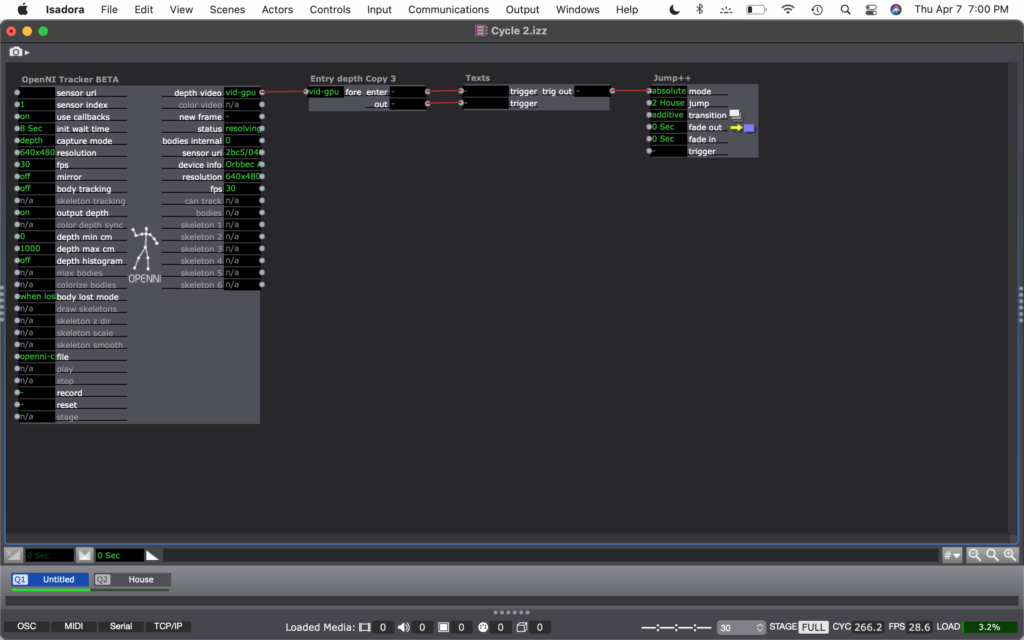
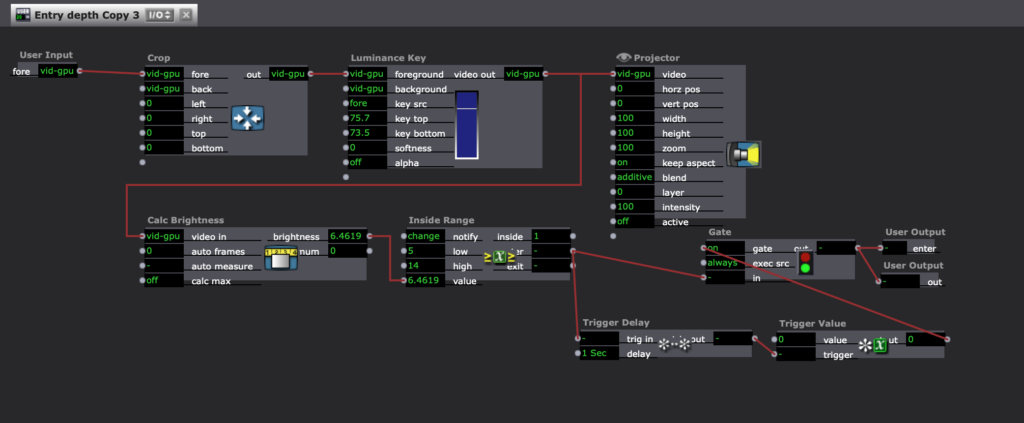
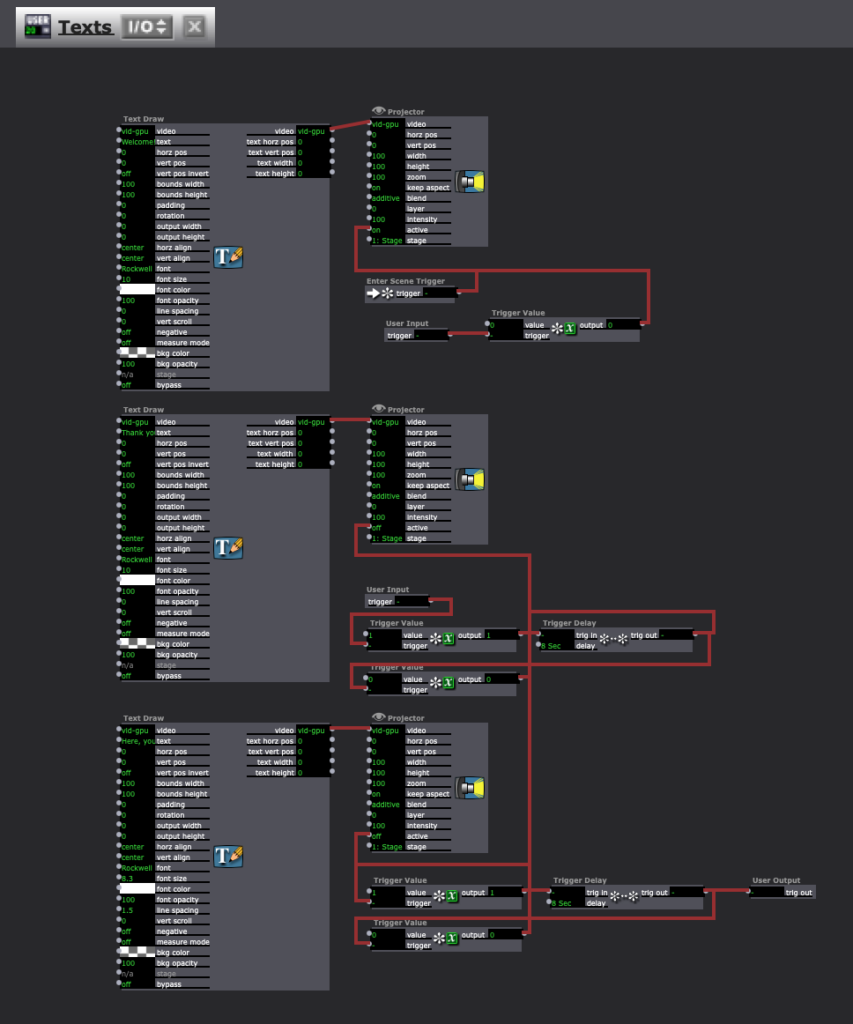
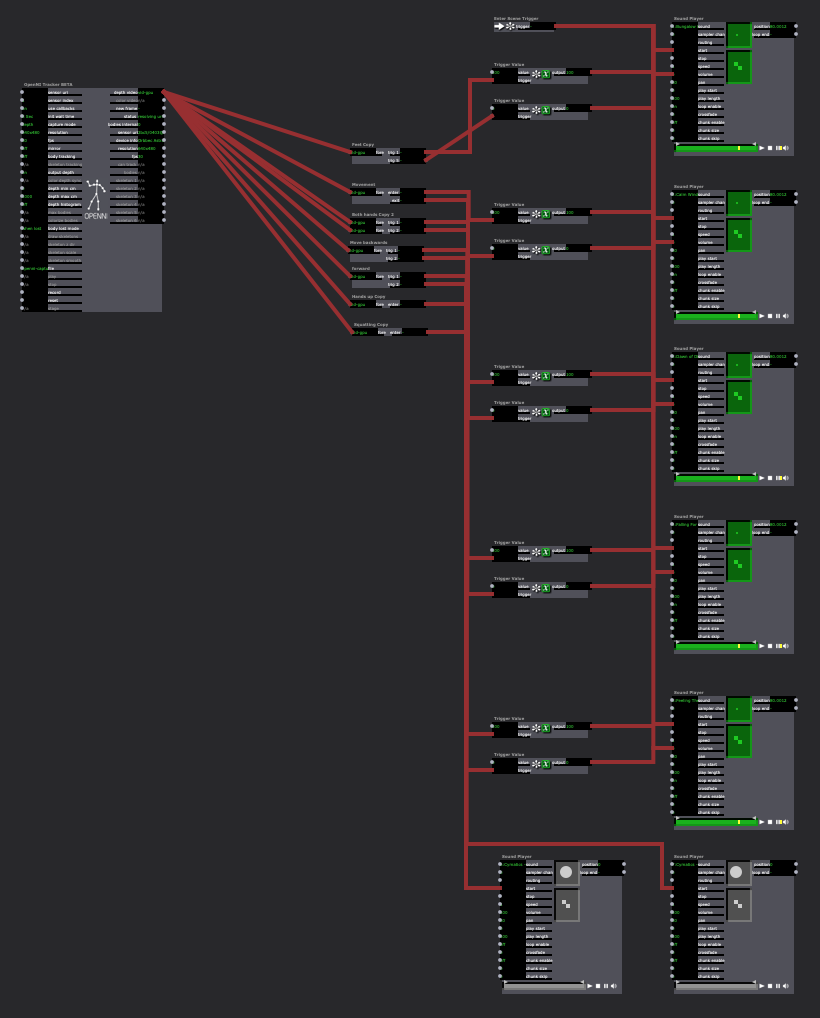
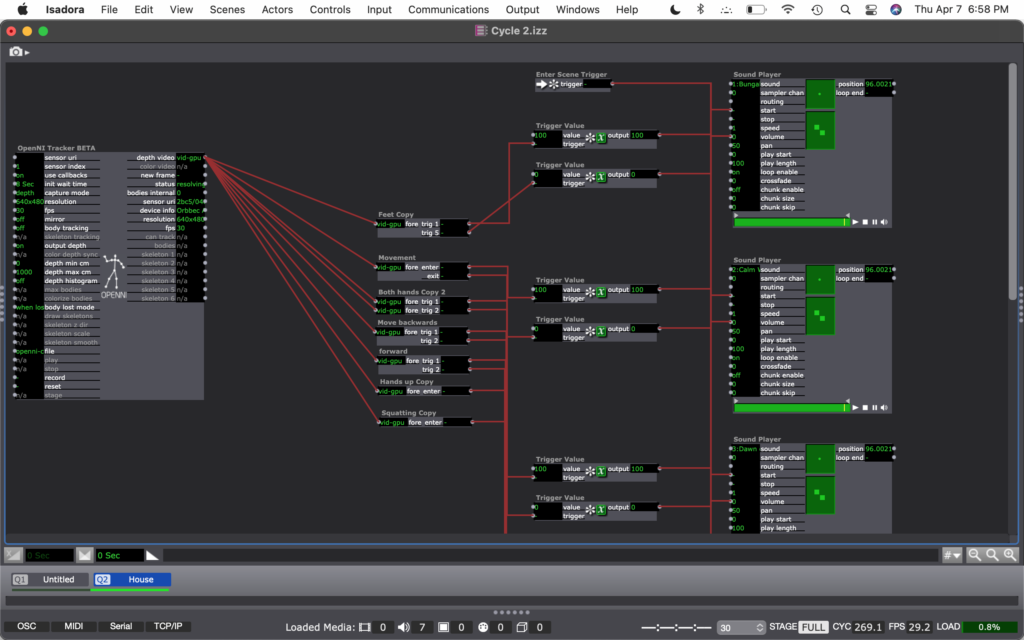

I had two possible audiences in mind for this. The first audience I was considering was people who don’t typically dance, and who find this in a type of installation and want to play with it. Like I mentioned at the beginning, I’m curious about how completing an activity motivated through exploration will knock down inhibitions that are associated with movement. Maybe finding out that the body can create different sounds will inspire people to keep playing. The other audience I had in mind was a dancer who is versed in freestyle dance, specifically in house dance. I created a house song within this project, and I inspired the movement triggers based on basic moves within house dance. Then, the dancer could not only freestyle with movement inspired by the music, but their movement can inspire the music, too.
For this demo, I chose to present it in the style for the first audience. Here is a video of the experience:
I ran into a few technical difficulties. The biggest challenge was how I had to reset the trigger values for each space I was in. The brightness of the depth was different in my apartment living room than it was in the MOLA. I also noticed that I was able to create the different boundaries based on my body and how I would move. No one moves exactly the same way, so sounds will be triggered differently for each person. It was also difficult to keep things consistent. Similarly to how each person moves differently from each other, we also don’t ever move exactly the same. So when a sound is triggered one time, it may not be triggered again by the same movement. Finally, there was a strange problem where the sounds would stop looping after a minute or so, and I don’t know why.
My goal for this cycle was to have multiple songs to play with that could be switched between in different scenes. If I were to continue to develop this project, I would want to add those songs. Due to time constraints, I was unable to do that for this cycle. I would also like to make this tech more robust. I’m not sure how I would do that, but the consistency would be nice to establish. I am not sure if I will continue this for my next cycle, but these ideas are helpful to consider for any project.
Final Mission: three travelers
Posted: December 11, 2019 Filed under: Emily Craver, Final Project | Tags: choose your own adventure, dance, Isadora Leave a comment »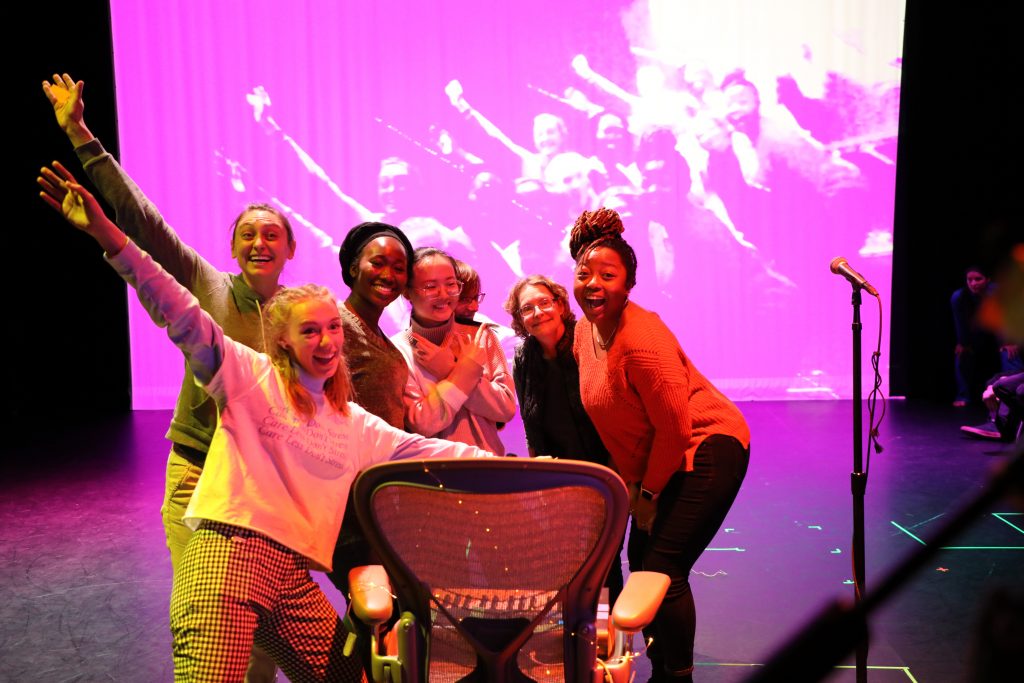
photo by Alex Oliszewski
During my Cycle 3 of Choose Your Own Adventure: Live Performance Edition, I explored how to allow for more timelines. I realized that the moments of failure for the audience provides excitement and raises the stakes of the performance. How to make a system that encourages and provides feedback for the volunteers while also challenging them?
I feel most creative and myself when creating pieces that play with stakes. I love dance and theatre that encourages heightened reactions to ridiculous situations. The roles of the three travelers started to sink in to me the more we rehearsed. They needed to be both helpless adventurers somewhere distant in time and space while also being all-knowing, somewhat questionably trustworthy narrator-like greek chorus assistants. Tara, Yildiz and I added cheering on the volunteers to blur those lines of where and who we are.
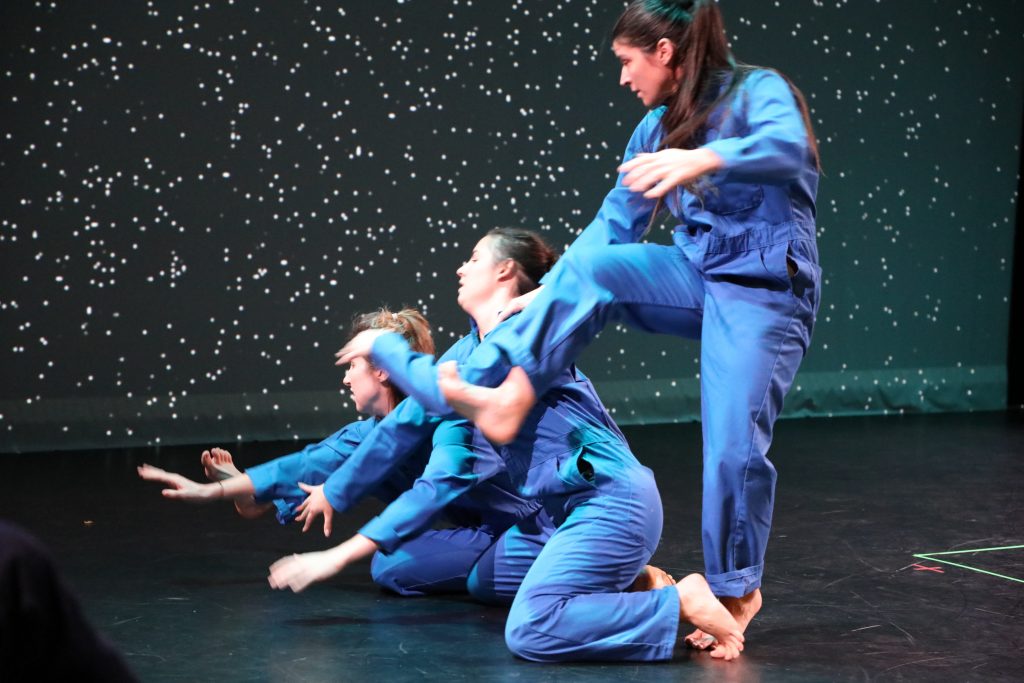
photo by Alex Oliszewski
The new system for Choose Your Own Adventure included: MIDI keyboard as a controller, Live Webcam for a live feed of adventurers and photo capture of successes, FocusRite Audio hook-up for sound input and sound level watcher, GLSL shaders of all colors and shapes, and Send MIDI show control in order to trigger light cues.
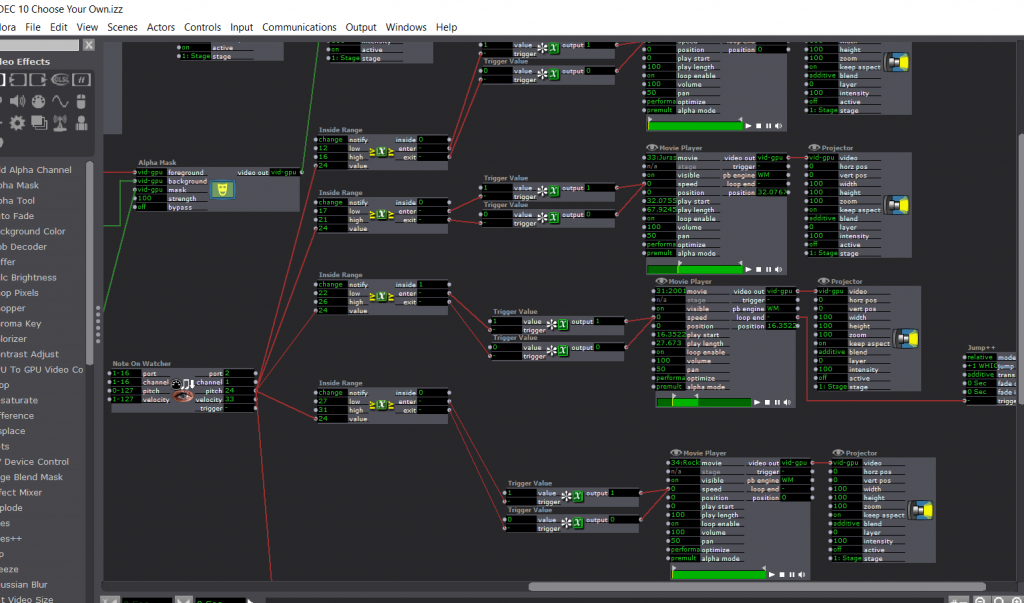
The new system provided more direct signs of sound level watching and cues to the volunteers. The voice overs were louder and aided by flashing text reiterating what the audience should be doing. The three travelers became side coaches for the volunteers as well as self-aware performers trying to gain trust. I found myself fully comfortable with the way the volunteers were being taken care of and started to question and wonder about the audience who was observing all of this. How can an audience be let in while others are physically engaging with the material? I thought about perhaps close camera work of the decisions being made at the keyboard? Earlier suggestions (shout out to Alex Christmas who gave this suggestion) included an applause-o-meter to allow for the non-volunteers to have a say from their seats. A “Who Wants to be a Millionaire” style audience interaction comes to mind with options for volunteers to choose how to interact and have the audience come to their aid. What does giving audience a voice look like? How can it be both respectful, careful and challenging?
